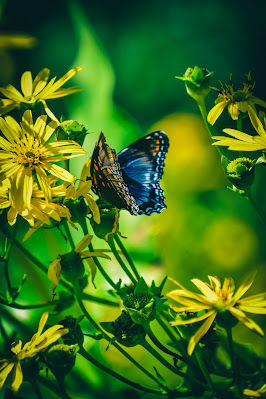The Importance of Animal Welfare in Ensuring Wildlife Conservation Success!
Animal welfare and wildlife conservation are interrelated concepts that are crucial for preserving the health and wellbeing of the world's diverse species. The welfare of animals plays a critical role in the overall success of wildlife conservation efforts, as it ensures that animals are protected from harm and are able to live in their natural habitats with minimal human interference.
Wildlife management refers to the practice of preserving, conserving, and restoring the populations of wildlife species and their habitats. This is done through a variety of techniques, including habitat restoration, population monitoring, and the control of non-native species that can negatively impact native wildlife.
One of the main ways that animal welfare is related to wildlife conservation is through the use of captive breeding programs. These programs are designed to help maintain and conserve endangered species by breeding them in controlled environments and then releasing them back into the wild. While these programs can be successful in preserving species, they can also raise concerns about the welfare of the animals involved. For example, captive breeding programs can lead to inbreeding and genetic depletion, which can negatively impact the health and wellbeing of the animals.
Another way that animal welfare plays a role in wildlife conservation is through the management of conflicts between wildlife and humans. For example, when wildlife species come into contact with human populations, they can damage crops and cause other types of damage. To address these conflicts, wildlife managers may use a variety of methods, including habitat modification, non-lethal deterrents, and the relocation of wildlife. However, it is important to ensure that these methods are humane and do not cause undue harm to the animals involved.
In conclusion, animal welfare and wildlife conservation are interdependent concepts that are crucial for the preservation of the world's diverse species. Through the use of captive breeding programs, the management of conflicts between wildlife and humans, and the protection and preservation of habitats, wildlife managers and conservationists can work to ensure that animals are protected and able to thrive in their natural environments.
Animal welfare and wildlife conservation are interrelated issues concerned with the protection and management of animals and their habitats. Animal welfare refers to the physical and psychological well-being of individual animals and encompasses issues such as humane treatment, adequate housing, proper nutrition, and the provision of adequate medical care.
Wildlife conservation, on the other hand, focuses on preserving and protecting entire species and their ecosystems. This includes efforts to protect and restore habitats, regulate hunting and poaching, and combat illegal poaching, habitat destruction, and climate change. Both animal welfare and wildlife conservation are crucial for maintaining the health and diversity of the planet's ecosystems and for ensuring the long-term survival of many species.
Finally, animal welfare and wildlife conservation are connected through the importance of habitat protection and preservation. Wildlife species need healthy, intact habitats to survive and thrive, and conservation efforts must focus on protecting and restoring these habitats. This can involve a range of activities, such as the creation of protected areas, the management of invasive species, and the reduction of human-caused impacts on the environment.
Here is 4 FAQ:
1. What is the difference between animal welfare and wildlife conservation?
Ans: Animal welfare is focused on ensuring the well-being and humane treatment of individual animals, while wildlife conservation is concerned with preserving species and ecosystems for future generations.
2. How does animal welfare impact wildlife conservation?
Ans: Animal welfare practices can affect the health and survival of individual animals, which can in turn impact the overall populations of species and the ecosystems they inhabit.
3. How does human activity impact animal welfare and wildlife conservation?
Ans: Human activities such as habitat destruction, hunting, and pollution can have negative impacts on both animal welfare and wildlife conservation.
4. What can be done to promote animal welfare and wildlife conservation?
Ans: Individuals can support organizations that work to protect wildlife and improve animal welfare, reduce their personal impact on the environment, and advocate for policies that prioritize the protection of animals and their habitats.
.jpg)




Comments
Post a Comment